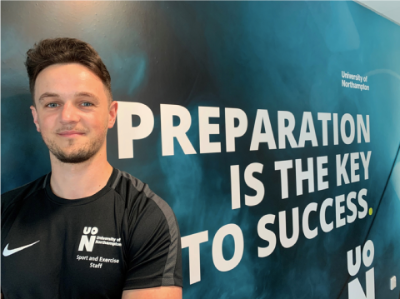Take part in new exercise research
Support Ben Wright in his PhD research to find out how static exercises can improve the health of blood vessels and lower blood pressure
Ben Wright is studying for a PhD at the University of Northampton and is running a series of studies exploring how isometric exercises can be used to lower blood pressure. Ben and a team of researchers are recruiting for a new trial now, so we caught up with Ben about his research and how you can take part.

What are isometric exercises?
Isometric exercises are when muscles contract but don’t change length. They’re often referred to as ‘static’ exercise. An example is squeezing a ball in your hand and holding that squeeze, as the muscles of your forearm are isometrically contracting. This is opposed to isotonic contractions where the muscle lengthens and shortens, for example, a bicep curl.
In the past, isometric exercises were thought to be unsafe because they raised blood pressure, and there wasn’t much research into them. However, research is emerging that suggests the size of the blood pressure response is determined by the intensity and duration of the exercise, and low-to-moderate intensities are safe. You do them in short sessions, typically at 20-30% of your muscles’ maximum force, so they don’t put too much stress on your heart and blood vessels.
What’s known about isometric exercises so far?
The research has really taken off over the last ten years or so. Studies have now shown that just four weeks of isometric exercise can lower blood pressure and may be just as effective as medication, and as good if not better than other types of exercise! There are now different methods of completing isometric exercise, common methods being using a hand grip device or bilateral leg extension, where you try to straighten both legs as you push against a specialist piece of equipment.
An advantage of isometric exercises is that they only take a short time. They have been shown to lower systolic blood pressure by about 5-8mmHg with only 12-14 minute sessions performed three times a week over eight-weeks. With rest time, that’s just eight minutes of contractions per session. It’s more time-efficient than going for a run and you can do them seated at home, so it’s a more attractive way to reduce blood pressure, and it’s suitable for more people.
The mechanism by which they work isn’t completely clear, but recent studies looking at hand grip exercises have shown they may improve the function and structure of blood vessels locally, so it appears the blood vessels adapt to the repeated exercises.
What’s the new research trying to find out?
We’re looking at different ways of performing the exercises and how they affect blood pressure. We’re also exploring biomarkers in the blood to understand the mechanisms.
We’re recruiting for a new study exploring whether whole-body exercises using resistance bands are more effective than hand grip exercises, what effect they have on blood vessels throughout the body when larger muscle groups are used, and if the exercises can be done effectively at home.
The idea is to develop safe and effective exercises that people can do at home without supervision, the need to travel, or expensive equipment.
What’s involved in taking part?
To take part, you will need to visit Northampton around five times over ten weeks and complete three short exercise sessions a week at home for eight weeks.
The study is open to adults of all ages with raised blood pressure, whether or not you are taking blood pressure medicines. You are also welcome to get in touch if you don't know your blood pressure at the moment.
If you are interested in taking part, and for further details, contact Ben at benwright@brookes.ac.uk
